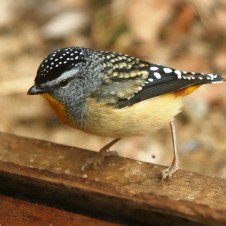
As the diversity of our planting is improving the diversity of birds is increasing with it. In replicating and extending the plant diversity of our forest the Seed Production Area (SPA) is highlighting the dependent relationships between native birds and indigenous plants. It has certainly made us more aware of the affect we can have on the landscape.
Many species of birds have moved into or passed through the SPA taking advantage of seed, nectar, pollen, and insect supplies. We have noted more Red-browed Finches enjoying the native grasses. Crested Shrike-tits have been seen for the first time in late summer 2011/2012 as they joined Yellow-faced Honeyeaters and White-naped Honeyeaters in taking advantage of the copious nectar supplies of the Silver Banksias. These plants were previously visited by Yellow-tailed Black Cockatoos, feasting on the seed, earlier in summer. The Cockatoos had also enjoyed the fruit of the Hakea plants, pruning them in the process. The Hakea then flowered through winter providing nectar for Eastern Spine-bills and White-eared Honeyeaters. The Grey Shrike-thrush and Yellow-rumped Thornbills have established across the area and Silvereyes are regular visitors.
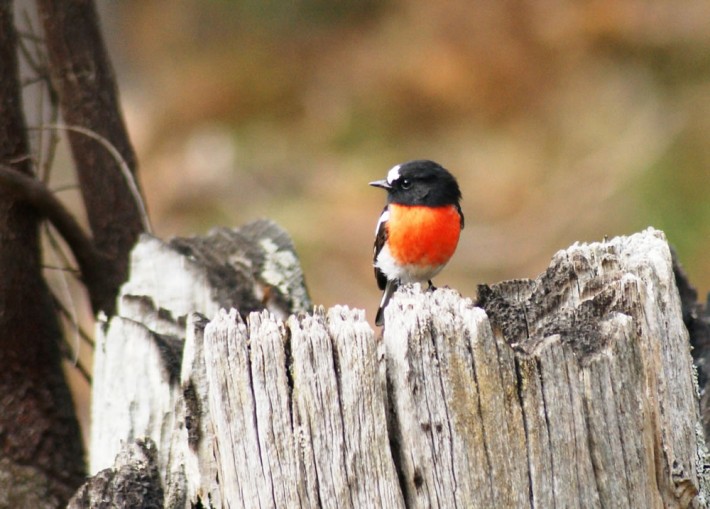
Providing a water supply is important in assisting this process as well as making bird observation much easier. The New Holland Honeyeaters are resident in the Banksia on an island in the dam. Elsewhere we provide water in a variety of safe locations. Smaller birds prefer shallow containers and sticks should be placed in deep containers or they can drown as can small marsupials. Rosellas like a bit more depth for bathing. It is most important to ensure the birds are safe from predators, especially cats! You may not own a cat but feral cats can unexpectedly move into an area. Our bird-baths are off the ground with safe vegetation, like prickly shrubs, nearby. Large shrubs and small trees are also not too far away and many offer safe vantage points. Clear access and exit opportunities are important too. In particular some large Cassinia bushes allow for large numbers to preen and feed.
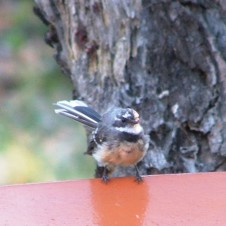
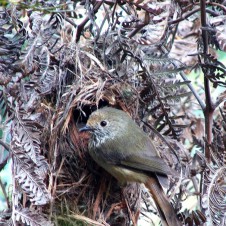
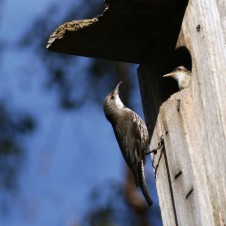
It is important to note that this small bird activity exists because of the larger landscape allowing a rich co-existence. For example:
- White-throated Treecreepers, briefly dominant at the bird-bath will quickly return to the nearby Eucalypts where they climb up and along the bark looking for ants.
- White-browed Scrubwrens return to ground level protected by grasses, logs and Lomandra plants, they can be seen turning over twigs and leaves as they hunt in the shady nooks.
- Grey Fantails and Scarlet Robins nesting nearby in dense thickets of Wattle, Bracken, Cherry Ballart, and Common Cassinia, like the more clear areas for hunting insects.
- The Brown Thornbills come in large numbers to drink and bathe. Being understorey feeders they flit amongst the Cassinia, feathery Acacia and daisy bushes. Meanwhile the Striated Thornbills and Spotted Pardalotes disappear higher into the Eucalypts looking for lerps and insects.
- Everywhere the Superb Fairy-wren families move briskly across the grasses, flitting quickly amongst the shrub thickets or singing from the tops of shrubs.
They all have their place in a hierarchy which is only possible in a diversity of indigenous plants, seen as a total community. As Graham Pizzey has noted “a species competes best by avoiding direct continual competition with other species”.
